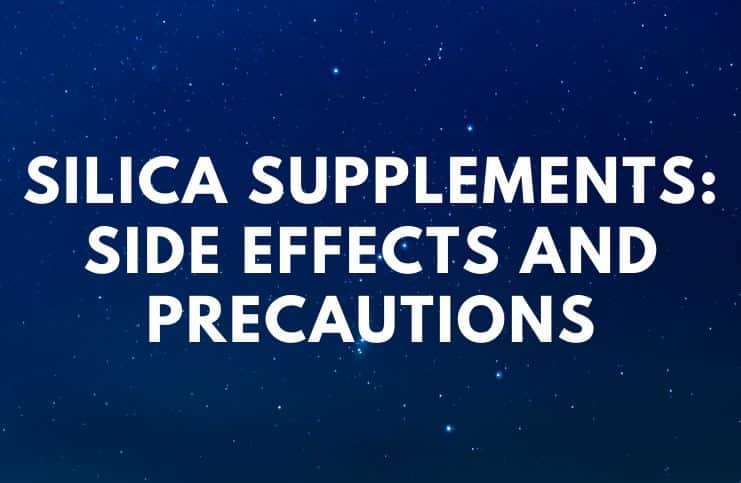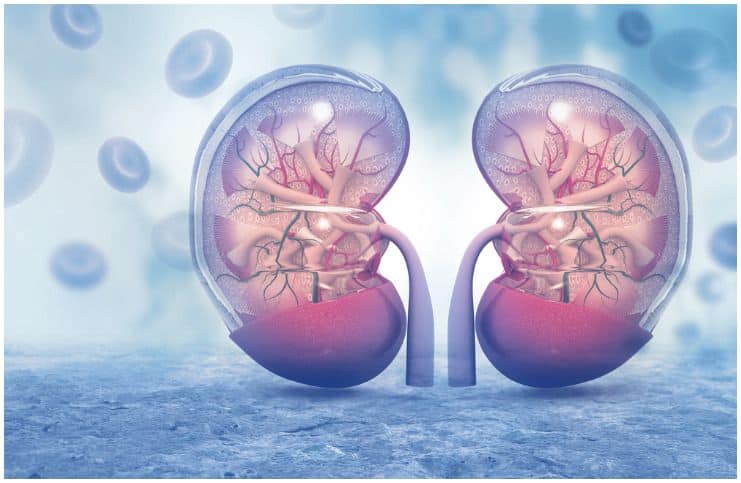Silica Supplements: Side Effects:
Silica, also known as silicon dioxide, is a combination of oxygen and silicon, the two most abundant elements on our planet.
It is most usually found in nature as quartz, in some amounts in opal and sand. In addition, it is found in trace amounts in many vegetables including leafy greens, cucumbers, onions, avocados, whole grains (such as rice, oats, and wheat), or strawberries.
The horsetail plant (Equisetum arvense), a member of the Equisetaceae family, contains the highest concentration of this compound found in plants.
This plant has been used in traditional medicine for thousands of years as a wound and coagulant, lead toxicity, bone healer, astringent, diuretic, and for kidney and bed-wetting in children.
In the human body, it is found mostly in the connective tissues, such as – blood vessels, skin, bone, cartilage, tendons, teeth, and hair.
Health Benefits
This mineral is important for the development of the body and has the capacity to make the most of the available calcium and then use it to repair bones and collagen.
Collagen, a structural protein, is found in all the connective tissues in your body ranging from your skin and bones and also provides essential functions for your muscles.
Moreover, it is necessary for the construction of antigens and antibodies, which both play an important role in the immune system. They also constitute most of the gamma globulin fraction, a protein fraction of blood serum.
In addition, it is said to have detoxifying benefits, especially aluminum detox by inhibiting aluminum absorption in the brain.
There is strong evidence that chronic exposure to aluminum is an important factor in many degenerative brain diseases, including autism, dementia, and Parkinson’s disease.
Side Effects of Silica Supplements
These supplements continue to increase in popularity. However, supplementing with this mineral has not been scientifically shown to provide actual any health benefits to humans.
Supplementation with this mineral over a long period of time can cause the following adverse effects:
Polyuria
It is a condition where the human body passes abnormally large amounts of urine each time you urinate and urinate more than usual.
This condition commonly appears in conjunction with increased thirst. This condition can be followed by a low level of potassium in the blood serum that can lead to an increases the risk of abnormal heart rhythm.
Note – the most common cause of polyuria in both children and adults is uncontrolled diabetes.
Kidney Stones
Kidney stones are pebble-like pieces of material that form in one or both of the kidneys. In the US, kidney stones affect approximately 1 in 11 people.
Kidney stones can appear in people taking this supplement for long periods of time.
Having kidney stones results in bleeding into the urine, pain, and blockage of the ureters. Nevertheless, kidney stones may also occur in people taking calcium supplements.
Thiamine Deficiency
This supplement can contain thiaminase, a specific enzyme that can split vitamin B1 (also known as thiamine) and render it inactive. Thiamine is a water-soluble vitamin that helps the body metabolize protein and fats to produce energy.
In addition, it improves the body’s capacity to withstand stressful conditions and boosts the immune system.
Symptoms of vitamin B1 deficiency (beriberi) include – nausea, tachycardia, headache, irritability, muscle cramps, fatigue, abdominal discomfort, and depression.
Conclusion
These supplements contain more silicon dioxide than anyone could consume naturally, and it is always better to take your nutrients from your food.
READ THIS NEXT:
10 Anti-Inflammatory Essential Oils
References https://www.ncbi.nlm.nih.gov/pmc/articles/PMC2658806/ https://www.ncbi.nlm.nih.gov/pubmed/17435951 https://www.ncbi.nlm.nih.gov/pmc/articles/PMC372406/ http://journals.plos.org/plosone/article?id=10.1371/journal.pone.0160622 https://www.ncbi.nlm.nih.gov/pubmed/22976072


